

If you spend most of your day staring at a computer screen or scrolling on your phone, chances are you’ve experienced tech neck. Also referred to as “text neck” or “computer neck syndrome,” it occurs when the posture of your head tilts forward while using a screen, putting stress on your neck and upper back muscles.
The good news? With the right tech neck exercises, you can start feeling relief in just a few minutes a day. Continue reading to discover 7 simple yet powerful yoga-based tech neck stretches designed to reverse forward head posture, reduce muscle tension, and restore alignment. These exercises are safe, effective, and ideal for office workers who want to ease discomfort and prevent long-term damage.
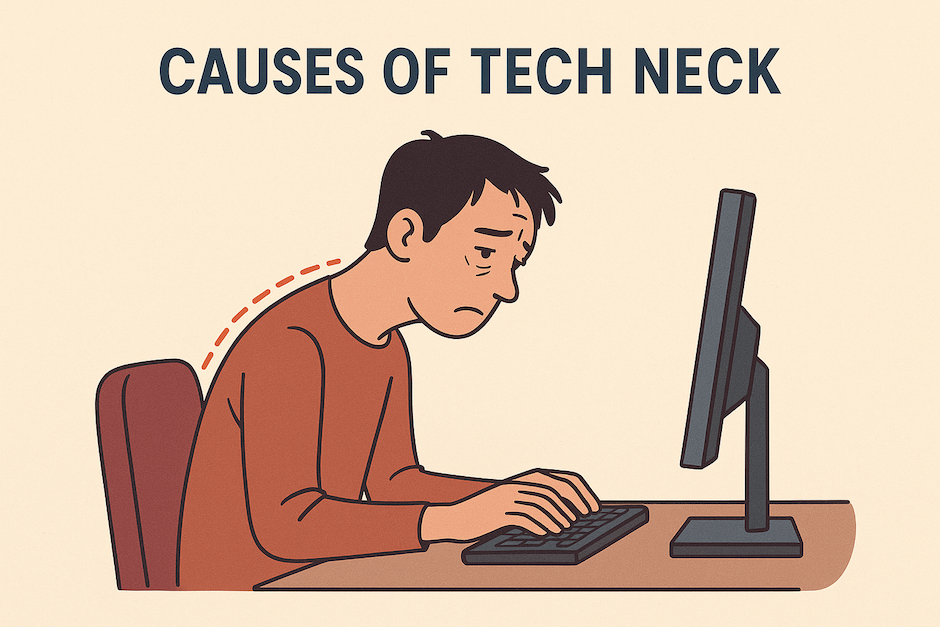
Tech neck—the forward head posture and stiffness you feel after hours of screen time—is more than just a nuisance. Research suggests that the average American spends around 5 hours on their phone every day. Add this to the time spent hunched over your screen and keyboard, and it is no surprise that the muscles in your neck and shoulders end up feeling stiff and achy.
In more serious cases, this can lead to cervicalgia, a medical term for chronic neck pain that can radiate into the shoulders and upper back. This constant strain leads to tight shoulders, a sore upper back, and misaligned posture, all of which can worsen over time if left unchecked.
The good news? Incorporating targeted exercises for tech neck into your daily routine can both reverse the damage and prevent it from returning.
These yoga-inspired movements aren’t just stretches — they’re posture resets. Each one is carefully chosen to counteract forward head posture, relieve tension, and build strength in supporting muscles. These include:
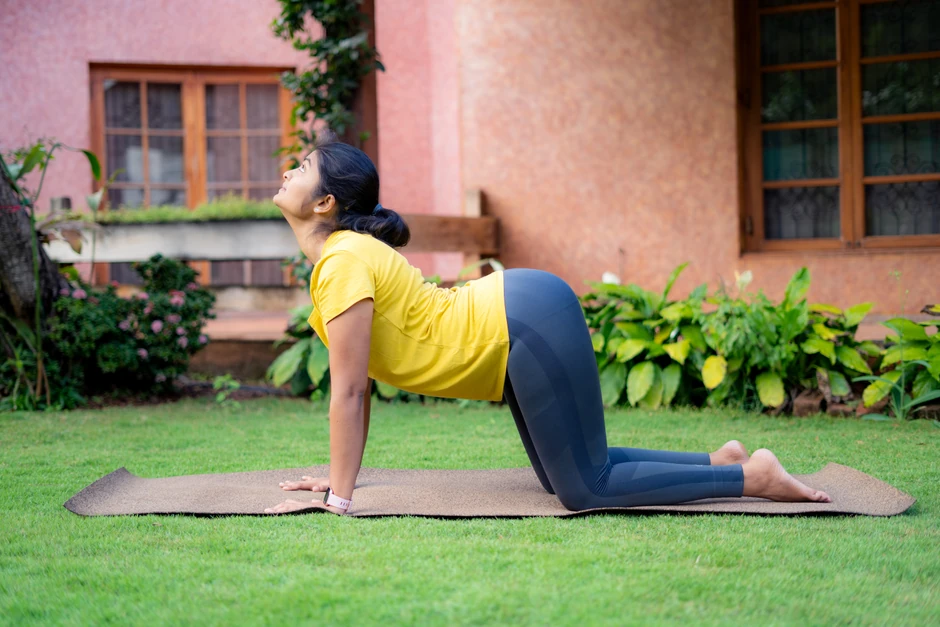
This tech neck exercise improves the mobility of the neck, spine, and back. By alternating between arching and rounding your back, you can relieve stiffness and promote better posture.
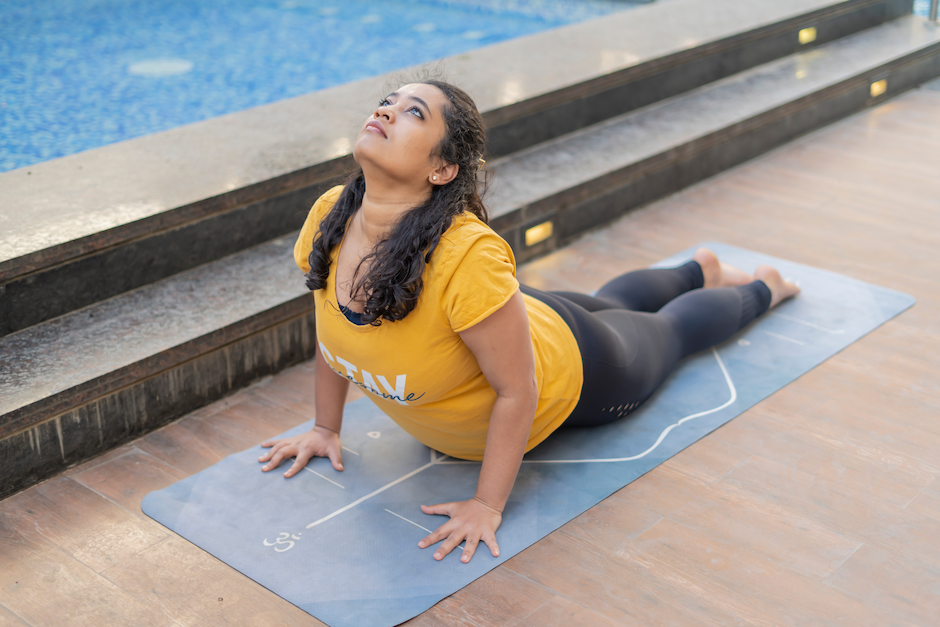
Cobra pose is a great exercise for tech neck as it stretches the chest, neck, and spine. This pose helps open up the chest and counteracts the forward hunch caused by long hours of desk work.
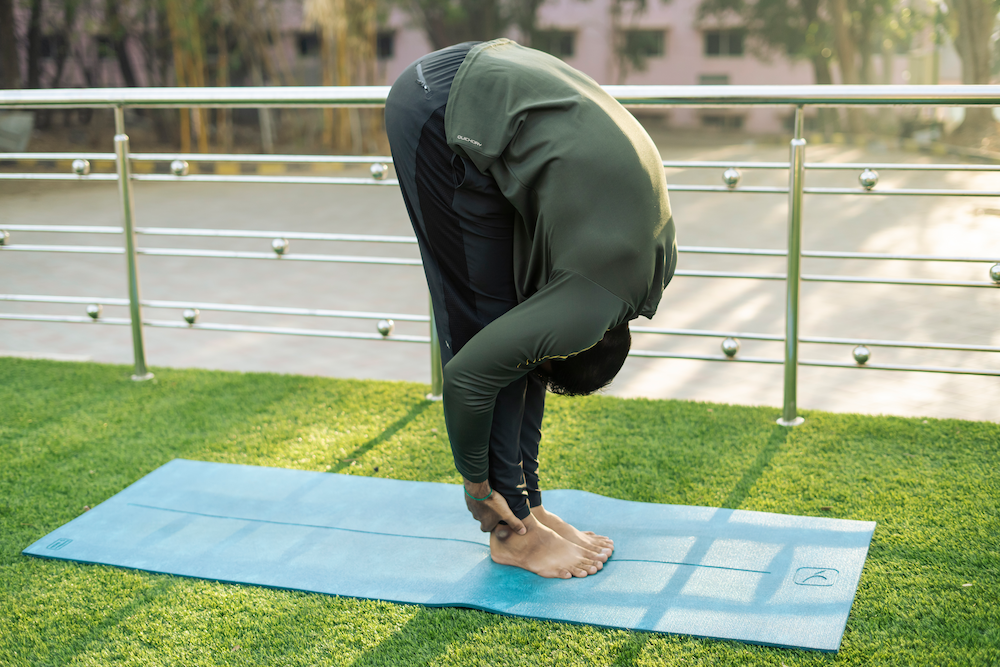
This yoga exercise helps release tension in the neck, shoulders, and spine. It also improves circulation and flexibility while alleviating tightness caused by sitting for long periods.

This is a deep upper-body twist that targets the shoulders, traps, and upper spine — areas where tech neck pain concentrates.
.webp)
This stretch targets the neck, shoulders, and upper back, helping to relieve tension while improving flexibility and strength in the upper body. It also counteracts the hunched posture caused by sitting for long hours.

This exercise opens up the chest and stretches the neck, helping to release tension and improve posture. It’s an excellent counterpose for those who experience neck stiffness from prolonged desk work.
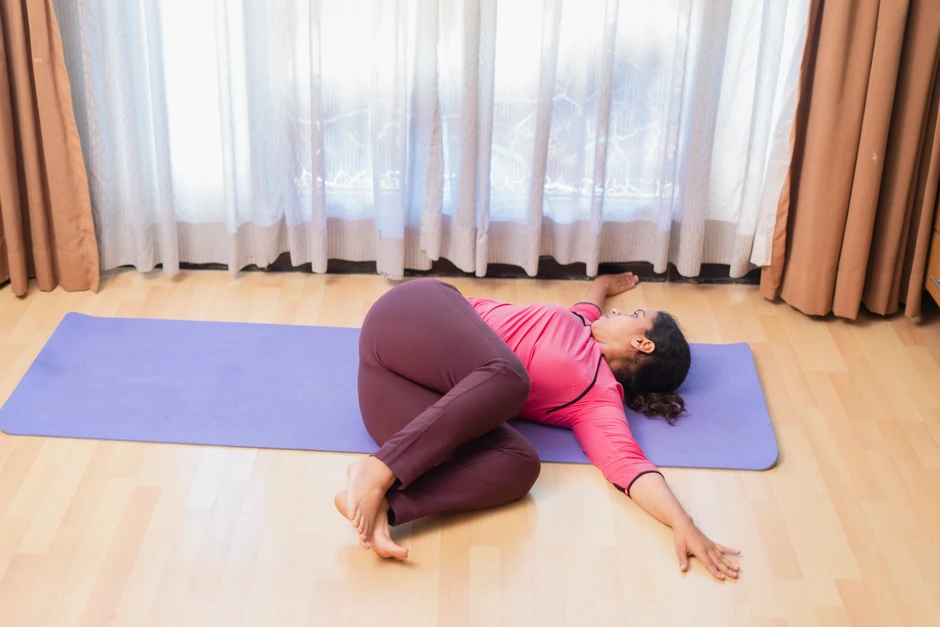
This gentle spinal twist relieves stiffness in the neck and upper back while helping to promote better spinal alignment. It’s perfect for unwinding after a long day at the desk.
Incorporating these tech neck exercises into your daily routine can help alleviate the discomfort caused by prolonged sitting and desk work. Not sure how to do them right? Book a free 1-on-1 session with a certified coach today!
Consistency is key when it comes to correcting tech neck. You don’t need a full yoga class — just a few minutes at key points in your day can make a big difference. Here’s how to build an easy, effective routine that fits into a busy schedule:
Morning (5 minutes)
Start your day with movement to reset your posture before the screen time begins.
Midday Breaks (2–3x daily, 3–5 minutes each)
Use short movement breaks to relieve tension and realign your spine.
Evening Routine (10 minutes)
Unwind and release deeper tension from the day.
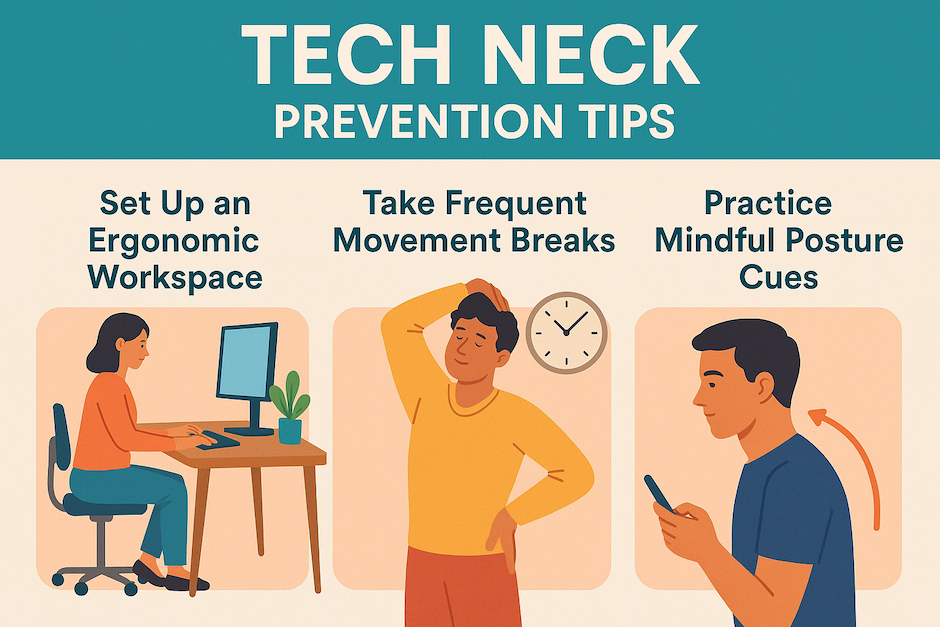
While tech neck exercises are powerful for relief, prevention is the long-term solution. Small changes in how you work can dramatically reduce the strain on your neck and shoulders.
Set Up an Ergonomic Workspace
Take Regular Movement Breaks
Practice Mindful Posture Cues
Doing tech neck exercises consistently is the first step, but doing them correctly and safely is what delivers lasting relief. That’s where personalized yoga instruction makes all the difference.
Personalized yoga instruction gives you real-time feedback on your alignment and posture, helping you perform each movement safely and effectively. It also allows for custom sequences tailored to your unique neck pain triggers and daily habits. Plus, having a dedicated teacher offers the accountability and encouragement needed to build a consistent, results-driven routine.
Our certified yoga instructors specialize in helping office workers ease tech neck pain with targeted sessions. Book a free 1-on-1 session with a coach today and see the difference personalized sessions can make!
For best results, practice tech neck exercises daily, even if just for 5–10 minutes. Short breaks throughout your workday, combined with a longer evening routine, can help prevent pain from returning.
Yes! When done consistently and correctly, exercises like Cat-Cow, Cobra Pose, and Fish Pose can help realign the spine, strengthen postural muscles, and reverse forward head posture over time.
While results vary, Cobra Pose and Thread the Needle often deliver immediate relief by opening the chest and releasing upper back tension. However, sustained posture improvement comes from a regular routine.
Absolutely. Try seated Cat-Cow, shoulder rolls, and gentle neck tilts every hour. You can also do a Standing Forward Fold using your desk as support for a midday reset.

Receive personalized guidance tailored to your unique fitness goals, live with a dedicated coach—no credit card required.